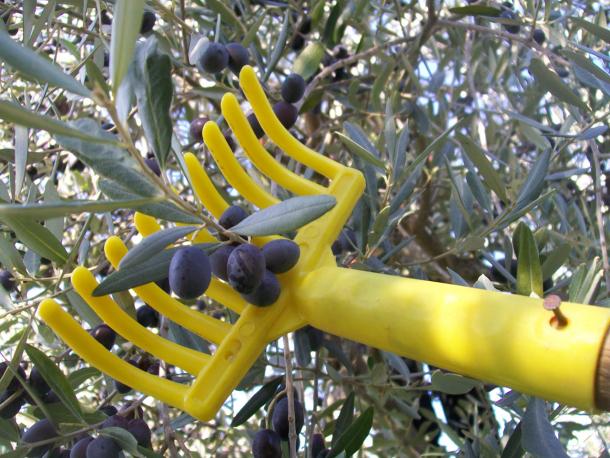The Italian Olive Harvest: An Extra Virgin November
Everyone knows Italy in the spring is simply outstanding. By May the flowers are in full bloom, flaunting their wondrous rainbows of color through inviting gardens and along walkways. In summer the country is beautiful, but August is mostly a time of empty cities where the heat takes its toll and the locals flee for their own month-long holidays at the beaches. Visitors during that time not only have to deal with the intense heat and humidity, but also with fewer open stores and restaurants.
Fall takes on a different tone. It is cooler, more pleasant than the hot Mediterranean summer, but the vivid colors typical in many parts of the world are more muted in Italy. There are many greens and browns, but hardly visible are the bright oranges, reds and yellows of say a New England fall.

November in Italy, though not rich in tree color, is a fantastic time to visit for several reasons. The crowds have thinned out. Gone are the long lines at the art museums. Deals can be found and negotiating is a little more successful; much of Italy’s commerce comes from tourism and the locals adapt accordingly to the slower periods. At the end of the month Christmas markets open; the northern Italian city of Trento has one of the most authentic of these markets where truly artisanal, hand-crafted items can be found. But most importantly for the foodie or olive lover, early November marks that important time in the olive tree’s life when their savory fruit should be harvested. The olives have spent months on the twisted branches, gaining nourishment from the sun and soil. It is important to pull the olives down before they become too ripe, as letting them go too long can turn their natural oil bitter.
In Italy the olive is very celebrated, and deservedly so. Many regions offer festivals on those weekends where olive tastings, educational activities and artistic performances are all part of the experience, but the real treat is finding a festival with live pressings of olives and samples from the harvest spoils.
Some people love olives so much that they will work for olive oil! For those interested in a truly rewarding experience, people can get “hired” to help harvest olives and get a bottle of freshly pressed olive oil as their pay. Working for olive oil might seem like a unlikely exchange; owners of olive groves know it’s a tiring, time consuming process, but also very gratifying. First, mesh nets need to line the entire ground around the trees so every olive can be captured. Next, plastic rakes work well to reach up and remove the fruit without destroying their flesh, but even then, a tree climber or a ladder will need to get those extra tall branches. A single tree, with six people working on it can take an hour or even two depending on how stubborn the olives stick to the branches.
Once collected and brought to the commercial olive pressers, the prized liquid is filtered out and the reward, besides the taste of the freshest pressed oil, is the memory of a wonderful experience where hard work truly pays off.
